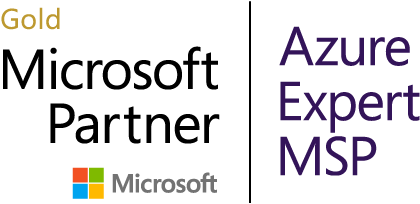Security, Hybrid Work, and Sustainability:
3 Key Takeaways from Microsoft Inspire 2021
By Dave Sasson
Microsoft Inspire 2021 has been and gone, and the virtual conference was as informative and invigorating as ever. The keynotes and various sessions covered a wide range of exciting topics, from AI to data sovereignty to the upcoming Windows 11.
Rather than recap the entire event (a feat which could probably result in an entire book), I’d like to discuss three areas that I believe companies will be leaning into over the course of the next 12 months: improved, integrated, zero-trust security, remote and hybrid work, and the role of technology in sustainability initiatives.
Microsoft 365 Lighthouse is consolidating security tools into a single, unified solution
A key takeaway from Satya’s talk as well as those of other executives was the importance of zero trust. Going forward, Microsoft aims to be a one-stop-shop for cybersecurity. They argue that attempting to integrate disparate point solutions is no longer sufficient to maintain an adequate security posture given the increasingly complex cybersecurity landscape. The goal is to combine identity management, threat detection, and compliance – as well as device management – into an interdependent whole.
To consolidate security into a single, zero trust platform, Microsoft have introduced Microsoft 365 Lighthouse. Lighthouse gives managed service providers standard security configuration templates to secure Microsoft 365-enabled devices and data, as well as a platform to manage them from. This lets partners and their customers quickly identify threats and other anomalies as they occur so that they can act on them accordingly. The system also reduces the complexity of managing and scaling many customers.
Hybrid work is the new normal, and Microsoft is leading the charge
To meet the increased demand for remote and hybrid work capabilities, Microsoft have announced several new initiatives, including the ability to build collaborative applications with Microsoft Teams and Dynamics 365.
“There is no going back to the digital adoption levels of two years ago. There is only going forward, and the Microsoft Cloud is the most trusted and comprehensive cloud to help our partners deliver on this unprecedented opportunity.”- Satya Nadella
Hybrid work is the new normal, and Microsoft is leading the charge
The pandemic has caused a significant shift in how companies across the world work. As Satya said, “There is no going back to the digital adoption levels of two years ago. There is only going forward, and the Microsoft Cloud is the most trusted and comprehensive cloud to help our partners deliver on this unprecedented opportunity.” To meet the increased demand for remote and hybrid work capabilities, Microsoft have announced several new initiatives, including the ability to build collaborative applications with Microsoft Teams and Dynamics 365.
This new category of apps will allow customers to work together in Teams without ever having to leave the ecosystem. Partners will be able to integrate their business functions and processes with Teams. Additionally, Microsoft is removing the software license fee to view and collaborate on Dynamics 365 records within Teams. This provides companies with a space to collect information and work on projects without searching multiple platforms for information at no additional charge.
One example of how these features will be used is improvements for sales personnel, who can now access CRM data while on a Teams call with customers. Notes taken on the Teams call can then be automatically transferred back to the Dynamics 365 record. This will result in greater visibility into customer data for all relevant stakeholders.
In addition to the Dynamics 365 and Teams integration, Microsoft also revealed Windows 365, a new cloud PC service that will change the way users experience Windows.
Windows 365 makes it easy to access all of your Windows data from any location. With a touch of the finger or click of the mouse, users can log into their Windows desktop and pick up exactly where they left off, from any device. Windows 10 and the upcoming Windows 11, along with saved settings and personal applications can all be streamed directly from the cloud, which comes with native integrations for Microsoft 365, Azure AD, and Microsoft Defender. This new cloud PC model is made possible through simplified per user, per month pricing, all without the need for virtualization.
Look out for the Windows 365 release on August 2nd.
Microsoft Cloud for Sustainability is accelerating carbon reduction initiatives
A major theme at Inspire was the shift away from focusing on siloed product solutions to more holistic industry solutions that drive specific business outcomes. For the last six months, Microsoft has been hard at work on five industry-specific cloud offerings: manufacturing, retail, healthcare, non-profit, and financial services.
At Inspire, a sixth solution was announced: Microsoft Cloud for Sustainability. This cloud will help organizations aggregate and take action on sustainability data. Use cases include reporting on IT carbon emissions and environmental footprints; the identification and tracking of specific emission sources and alerting the right teams if reduction goals are not being met; and the ability to provide sustainability scorecards to customers that detail exactly where their emissions are coming from and how close they are to meeting their goals.
With 94% of CEOs agreeing that sustainability is an important issue for their company, you can expect high demand for the Microsoft Cloud for Sustainability.
To discover more about how your company can leverage the solutions discussed at Microsoft Inspire, book a free consultation with the team at Hanu today.




